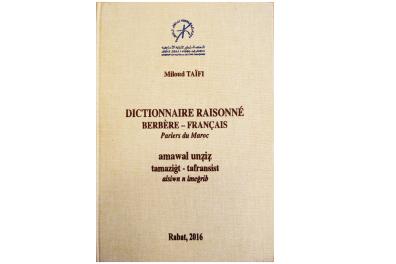The Berber-French dictionary, a major scientific and social project

The publication of the Dictionnaire raisonné berbère-français : les parlers du Maroc is the fruit of a human and scientific adventure that will have lasted over 15 years. This 1,200-page dictionary and 517-page index aims to affirm Berber identity and highlight what unites the different languages of Morocco and, more broadly, the Berber-speaking world.
The project began in 1996 and was led by two university professors: Miloud Taïfi (University of Fez, Morocco) and Patrice Pognan (Inalco). It focused on several Franco-Moroccan funding initiatives and actions.
Following on from the dictionary published by Miloud Taïfi in 1991, the Dictionnaire raisonné berbère-français : les parlers du Maroc is nevertheless much more than a simple update. One of the fundamental principles of this new dictionary is the reconstitution of the Berber language system, reflecting an innovative vision of the language. It is no longer seen as a mosaic of disparate dialects, each confined to a limited geographical area, but as a reflection of the openness of the languages and the contacts they maintain.
.
Thus, the lexical mass recorded in this work is no longer, as in the 1991 version, centered on the Tamazight dialect, which groups together the languages of central Morocco, but also includes new words and meanings attested in other Berber-speaking geolinguistic areas of Morocco.
The vast task of elaborating the linguistic system and creating a systemic script is based in particular on the classification of roots in alphabetical order in French, adapted to Berber phonemes. Moreover, translating Berber into French was made all the more difficult by the fact that these two languages belong to distinct families and represent very different cultures.
In another major innovation, the dictionary was also the subject of a major computerized automatic language processing project led by Patrice Pognan. In fact, the transformation of the dictionary into a structured computerized corpus has resulted in the creation of two indexes of over 500 pages: the first allowing the passage of Berber words to Berber roots, and the second from French to Berber roots, paving the still embryonic way for a future French-Berber dictionary.
In addition to the dictionaries themselves, the processing of the corpus opens up new applications, of which the "exemplier Taïfi" is the most notable. This tool makes it possible to select authentic examples and locutions from the dictionary to illustrate grammars or learning methods that have yet to be developed.
So, this new Berber-French dictionary is a major work for the Berber-speaking cultural area, and could lead to a great deal of further research, including the development of a new self-learning method for the Berber language.